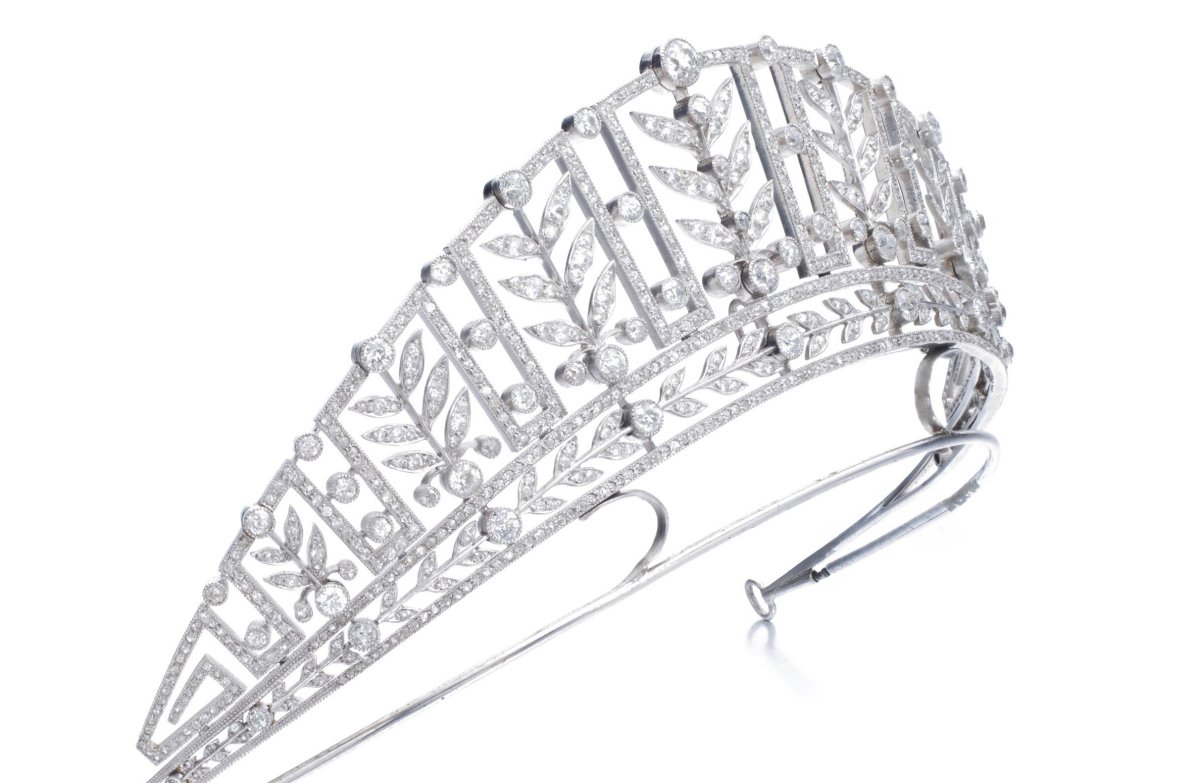
So far in our survey of the historic jewels of the upcoming Royal & Noble Jewels sale, we’ve looked at a whole range of fascinating pieces. But I know what you’re most excited to see: the tiaras!
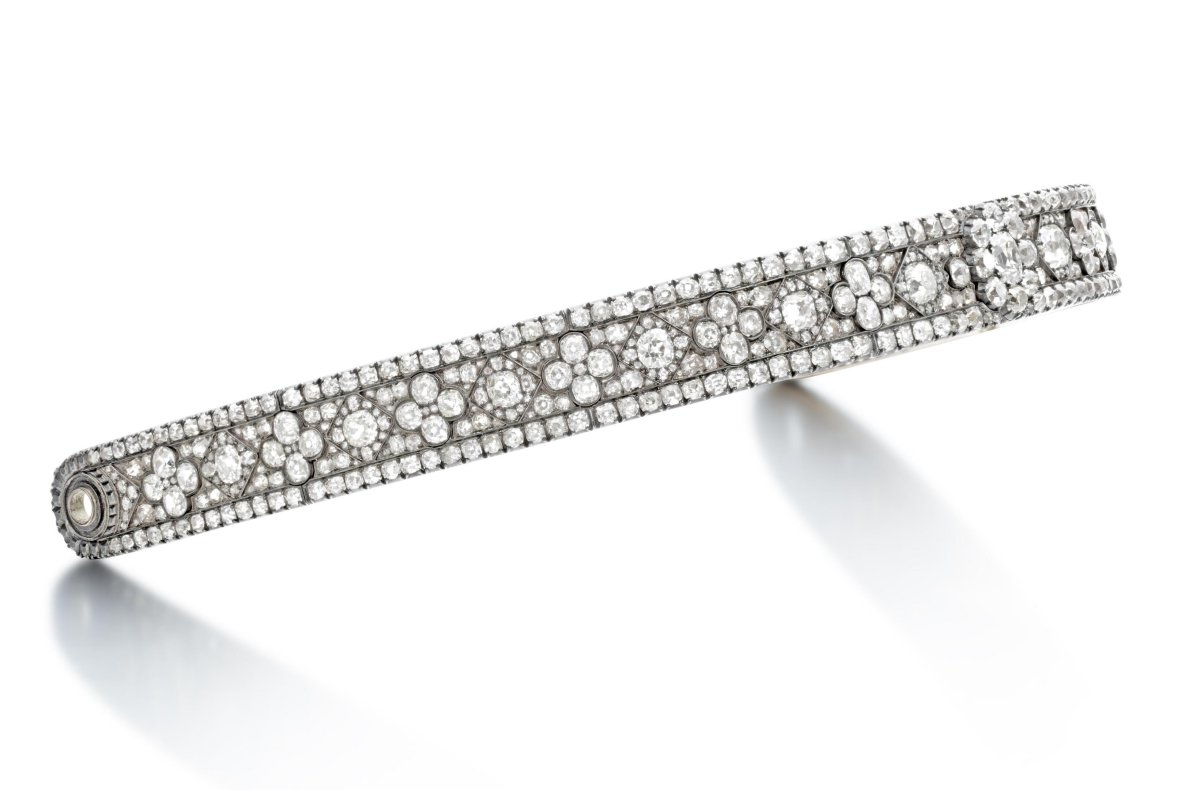
There are seven bejeweled tiaras, bandeaux, and aigrettes in the sale. Some come from the collection of the former royal family of Bulgaria, while others have links to other royal and noble families. We’ll start today with the Bulgarians. The collection of jewels includes this classic diamond bandeau-style tiara, which dates to the 1890s. Sotheby’s calls the tiara “superb,” featuring “alternating quatrefoils and lozenges, set throughout with old cushion-shaped diamonds.” Two of the diamond clusters can be removed and worn as earrings.
The tiara likely comes from the collection of Princess Marie Louise of Bourbon-Parma, the first wife of Tsar Ferdinand I of Bulgaria. Sotheby’s writes that the jewel “was in all likelihood created by the Viennese jeweller Rothe & Neffe.” In January 1924, the tiara was worn by Ferdinand and Marie Louise’s younger daughter, Princess Nadezhda, on her wedding day. (I wrote extensively about the princess, the wedding, and the bandeau recently at Hidden Gems.) It was later also worn by Nadezhda’s daughter, Duchess Sophie of Württemberg. The auction estimate for the bandeau is set at 70,000-100,000 Swiss francs, or around $80,000-$114,000 USD.
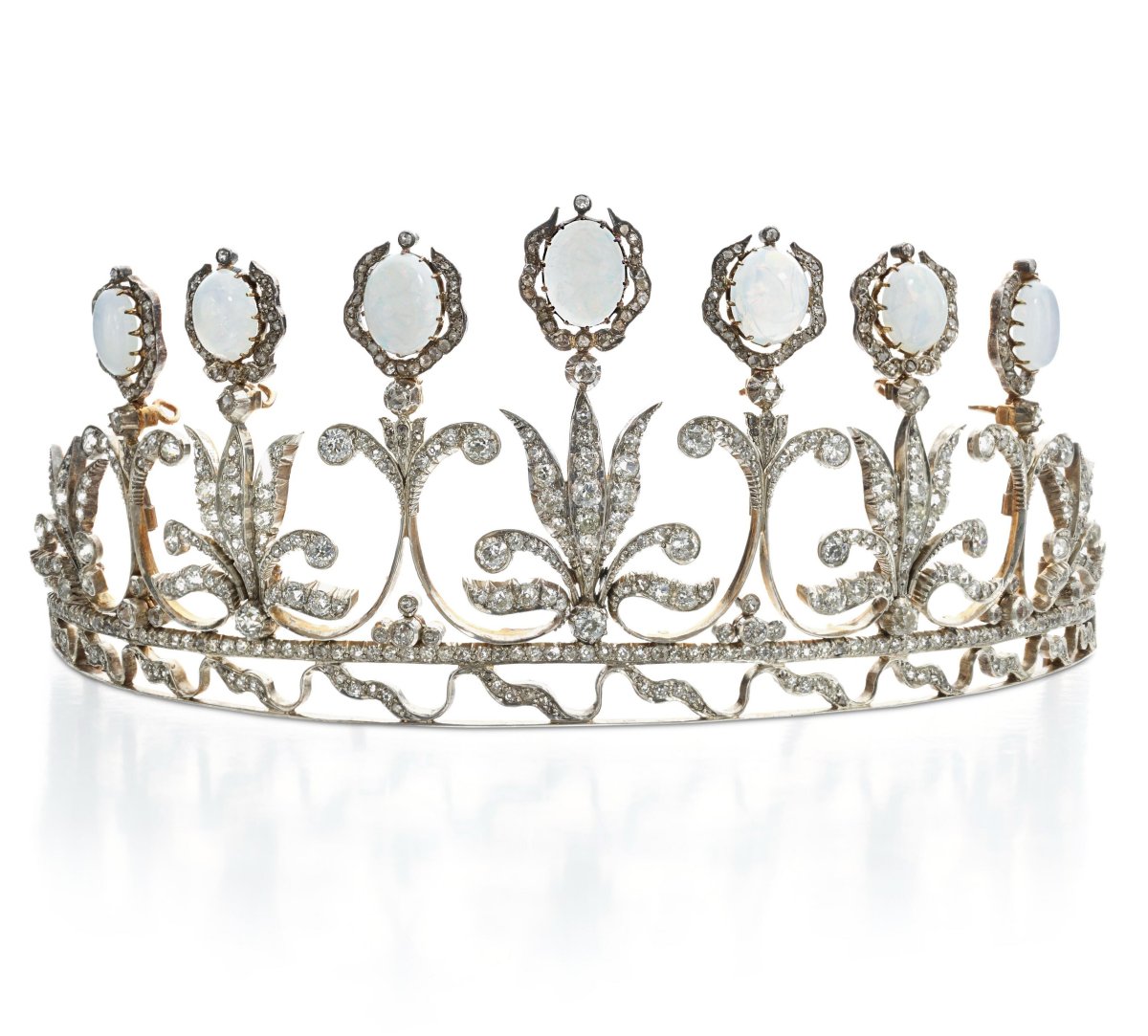
The auction also includes this striking diamond and opal tiara, part of a suite of jewelry that belonged to Princess Nadezhda’s Württemberg in-laws. Nadezhda’s father-in-law, Albrecht, Duke of Württemberg, joined together with his brother, Duke Ulrich, and his sister, Princess Maria Isabella of Saxony, to acquire the tiara for their new sister-in-law, Archduchess Maria Immaculata of Austria, when she married their brother, Duke Robert, in 1900. The Sotheby’s lot notes for the tiara includes an extensive biography of Archduchess Maria Immaculata, who was a dedicated jewelry collector. (She also owned more opals, including others included in the auction. I discussed some of them here recently at Hidden Gems.)
The tiara’s design is described by the auction house in the lot notes as well: “a series of acanthus leaves alternating with scrolls surmounting an openwork ribbon, set throughout with old cushion-shaped and circular-cut diamonds, accented by rose diamonds, topped by earlier, detachable cabochon opals in rose diamond borders.” It was purchased from the Dresden court jeweller Elimeyer in Saxony, which suggests that Princess Maria Isabella and her husband were the ones who chose the gift. Duke Robert and Archduchess Maria Immaculata did not have children of their own, and the tiara was bequeathed to Princess Nadezhda and her husband, Duke Albrecht Eugen of Württemberg, in 1968. Sotheby’s expects that the tiara will bring between 17,000-26,000 Swiss francs (or about $19,000-$30,000 USD) in the upcoming sale.
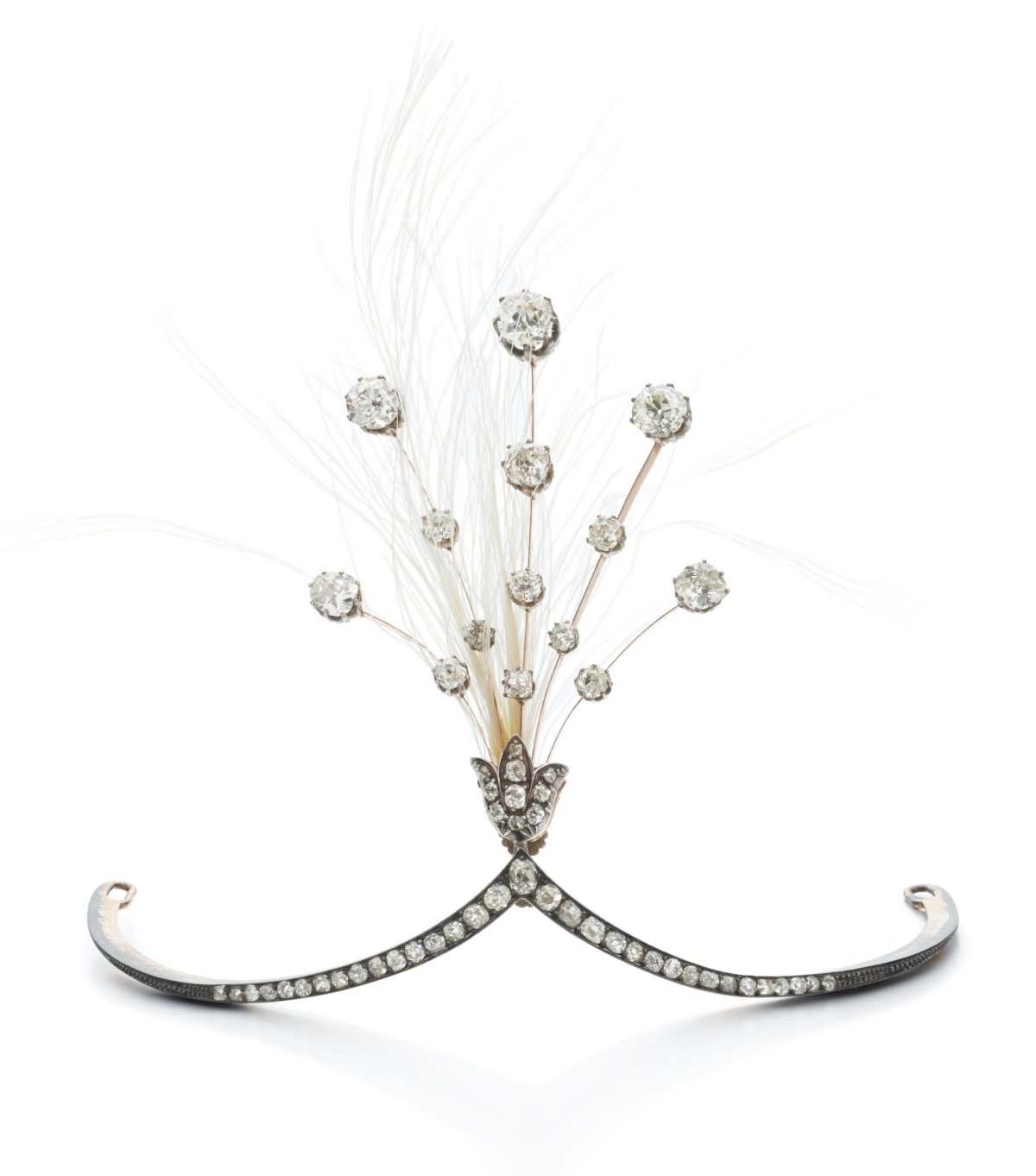
Princess Nadezhda’s elder sister, Princess Eudoxia of Bulgaria, also inherited grand jewels from her mother and grandmother. Among them was this classic diamond aigrette, which would have been worn with feathers, as shown in the auction photographs. These aigrettes were particularly popular in the 1890s, and the lot notes date the jewel to that period. (Other famous royal aigrette-wearers from the period include Queen Mary of the United Kingdom and Queen Maud of Norway.)
Sotheby’s tells us that the aigrette, described as consisting of a “detachable fan-shaped motif set with old cushion-shaped diamonds on knife-edge wiring” and “a base set with old cushion-shaped diamonds,” was a gift from the formidable Princess Clementine of Orléans to her daughter-in-law, Princess Marie Louise of Bourbon-Parma. On her death in 1899, the aigrette was inherited by the young Princess Eudoxia, who presumably willed it to her Württemberg nieces and nephews after her own passing in 1985. Sotheby’s anticipates that the aigrette will sell for 8,500-13,000 Swiss francs, or approximately $9,700-$15,000 USD.
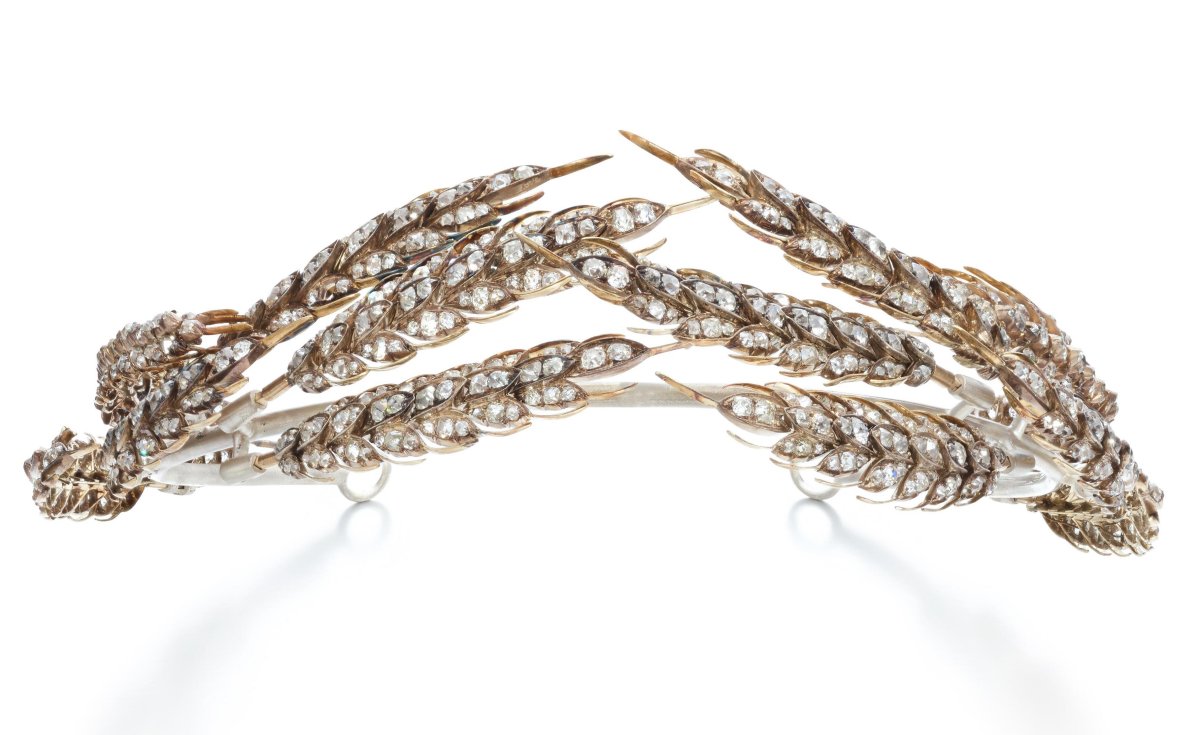
Another formerly-reigning royal family has also contributed jewels to the upcoming sale in Switzerland. Members of the House of Wittelsbach, descendants of the Kings of Bavaria, are offering this rather incredible diamond tiara in the sale. The jewel is described by Sotheby’s as “a wreath composed of fourteen detachable ears of wheat, each set throughout with old cushion-shaped diamonds.” It’s attributed, significantly, to Nitot, the French jewelry house that was the predecessor of Chaumet. Marie-Étienne Nitot was the court jeweler to Napoleon Bonaparte. When one of his allies, King Maximilian I Joseph of Bavaria, was looking to have new royal regalia designed in 1806, he turned to Nitot for the commission as well. (Napoleon’s stepson, Eugène de Beauharnais, married Maximilian Joseph’s eldest daughter, Princess Augusta of Bavaria, the same year.) The Bavarian royal family continued to work with Nitot and his son, François Regnault Nitot, on other pieces, including this important tiara.
Sotheby’s notes that King Maximilian Joseph traveled to Paris to spend time at the French imperial court in 1810, a time that coincided with the engagement of his eldest son, Crown Prince Ludwig, to Duchess Therese of Saxe-Hildburghausen. The lot notes suggest, “It is entirely possible that the Bavarian King acquired these diamond ears of wheat at Nitot as a wedding present for his new daughter-in-law.” François Regnault Nitot was certainly focused on this design style at the time. A year later, in 1811, he made a very similar ears-of-wheat tiara for one of Napoleon’s sisters, Pauline Bonaparte Borghese. The Bavarian diamond wheat ears were treasured by its owner, Queen Therese, who posed in them for a portrait after her husband’s accession in 1825. Sotheby’s expects the Bavarian tiara to bring significant interest at the auction, setting the estimate at 110,000-160,000 Swiss francs (or about $125,500-$183,000 USD).
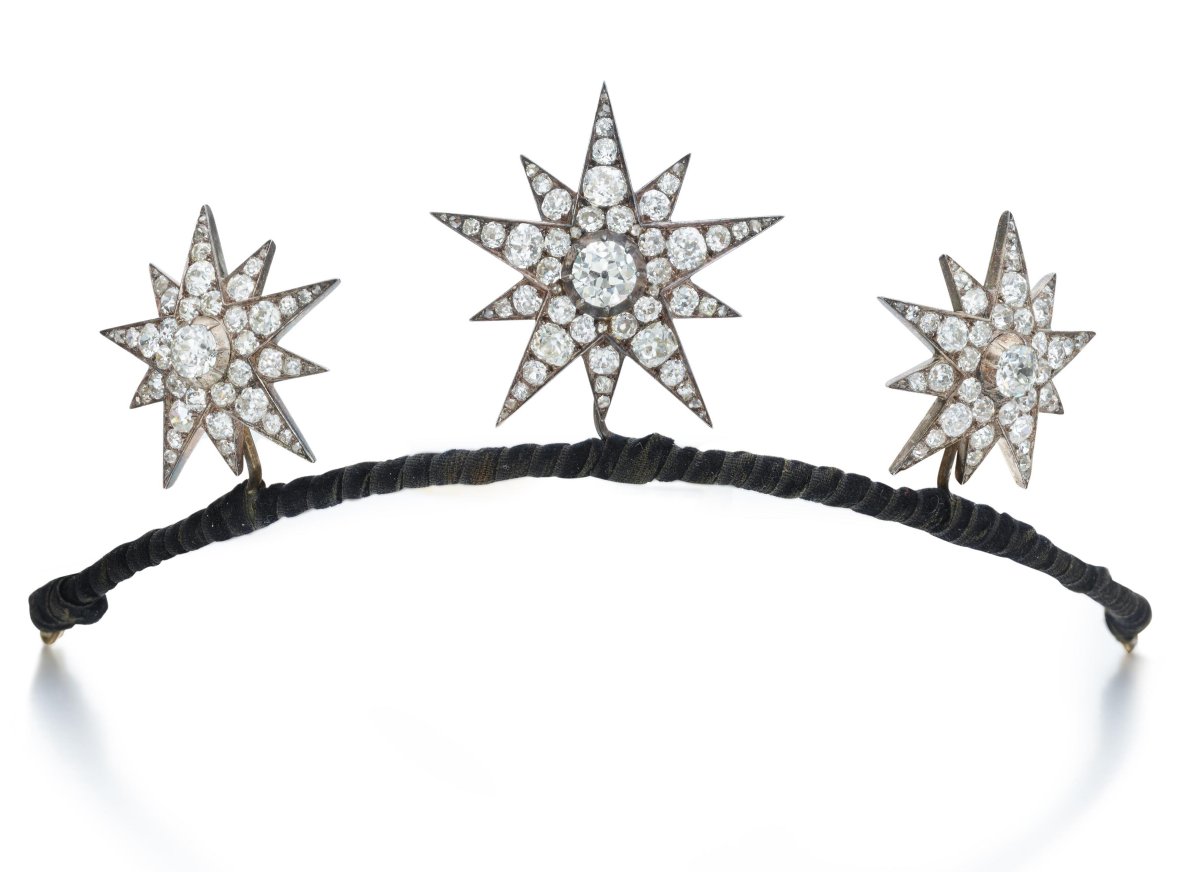
The descendants of the former Bavarian royal family are also selling another tiara in the auction: this simple diamond star tiara. Sotheby’s describes it as “composed of three detachable stars set with circular-cut and old cushion-shaped diamonds, accented by rose diamonds” and sets its creation date around 1880. As part of the lot, Sotheby’s is also advertising a brooch fitting for the central star.
The tiara comes in a fitted case from a Viennese jewelry firm, Vincenz Mayer Sons, who were known for producing the insignia for the imperial orders and decorations at the Habsburg court. The Bavarian royals and the Austrian royals were very closely related. Emperor Franz Joseph I of Austria, who reigned from 1848-1916, was the son of Princess Sophie of Bavaria, a daughter of King Maximilian I Joseph of Bavaria. Franz Joseph’s wife (and first cousin), Empress Elisabeth of Austria, who was so famous for her own collection of diamond stars, was the daughter of Duke Maximilian Joseph in Bavaria and Princess Ludovika of Bavaria, who was herself also a daughter of King Maximilian I Joseph of Bavaria. Exactly which Bavarian princess might have worn these diamond stars isn’t clarified in the Sotheby’s lot notes, but we do know how much they expect the tiara to fetch at auction: 8,500-13,000 Swiss francs, or around $9,700-$15,000 USD.
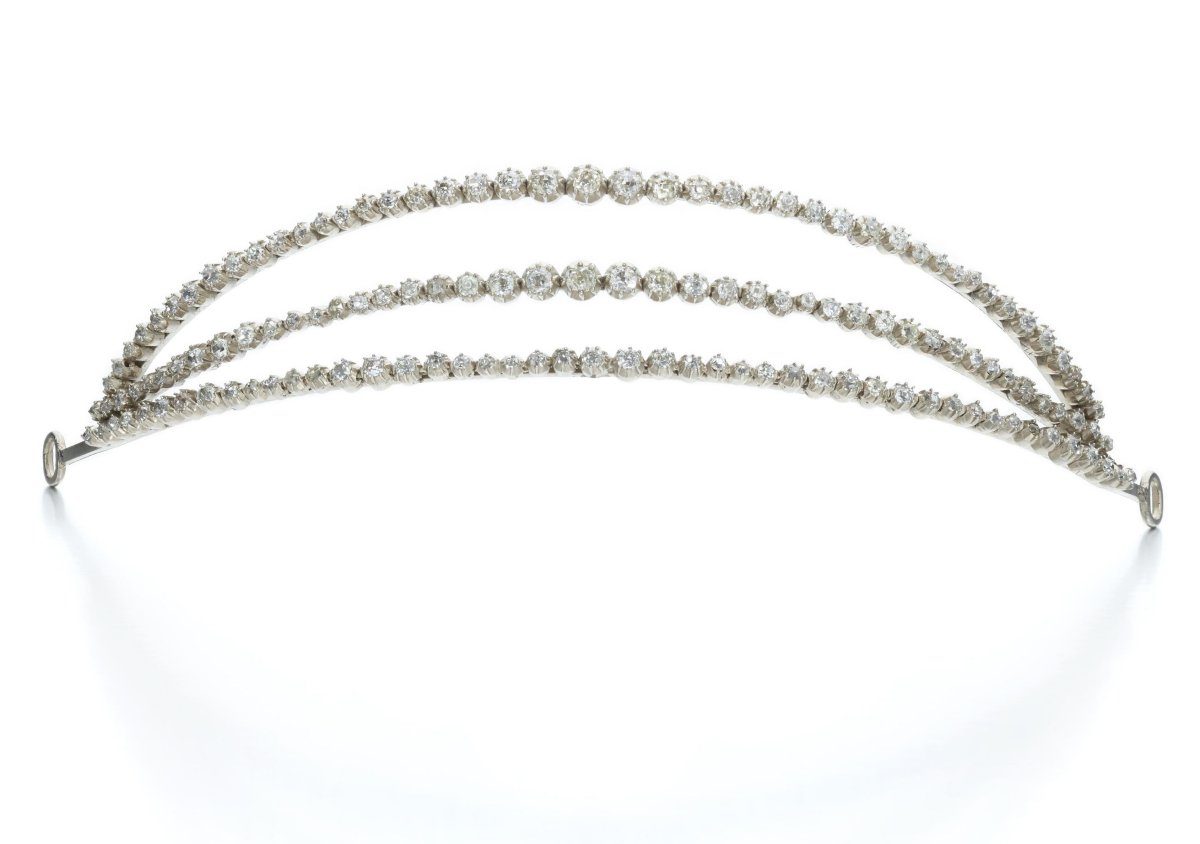
The last tiara offered by the Bavarian royals in the upcoming auction is this sleek, simple diamond bandeau. Little provenance information is offered about the jewel in the auction catalogue. The lot notes describe it as “three slightly graduated rows collet-set with old cushion-shaped and circular-cut diamonds.” No estimated creation date is given, and the maker of the piece is also not identified. The only clue we get about the tiara’s provenance is a description of its present owners. It’s described as the “property of the Ducal House of Bavaria.”
The House of Wittelsbach’s title distribution is a little unusual, in that the royal head of the house uses the title of “Duke of Bavaria,” while other relatives use the junior designation “Duke in Bavaria.” The ducal branch, as the latter is often called, includes royal figures like Empress Elisabeth of Austria, Queen Elisabeth of Belgium, and Hereditary Princess Sophie of Liechtenstein. Presumably this star tiara comes, as suggested by the lot notes, from somewhere in the ducal branch. The simplicity of the tiara, and the lack of a blockbuster royal provenance, means that this bandeau has a slightly lower auction estimate: 5,500-8,500 Swiss francs, or about $6,300-$9,700 USD. If I were a king with several daughters–I’m looking at you, Denmark, Belgium, the Netherlands, and Spain–I’d snap up a wearable bandeau like this as quickly as I could.
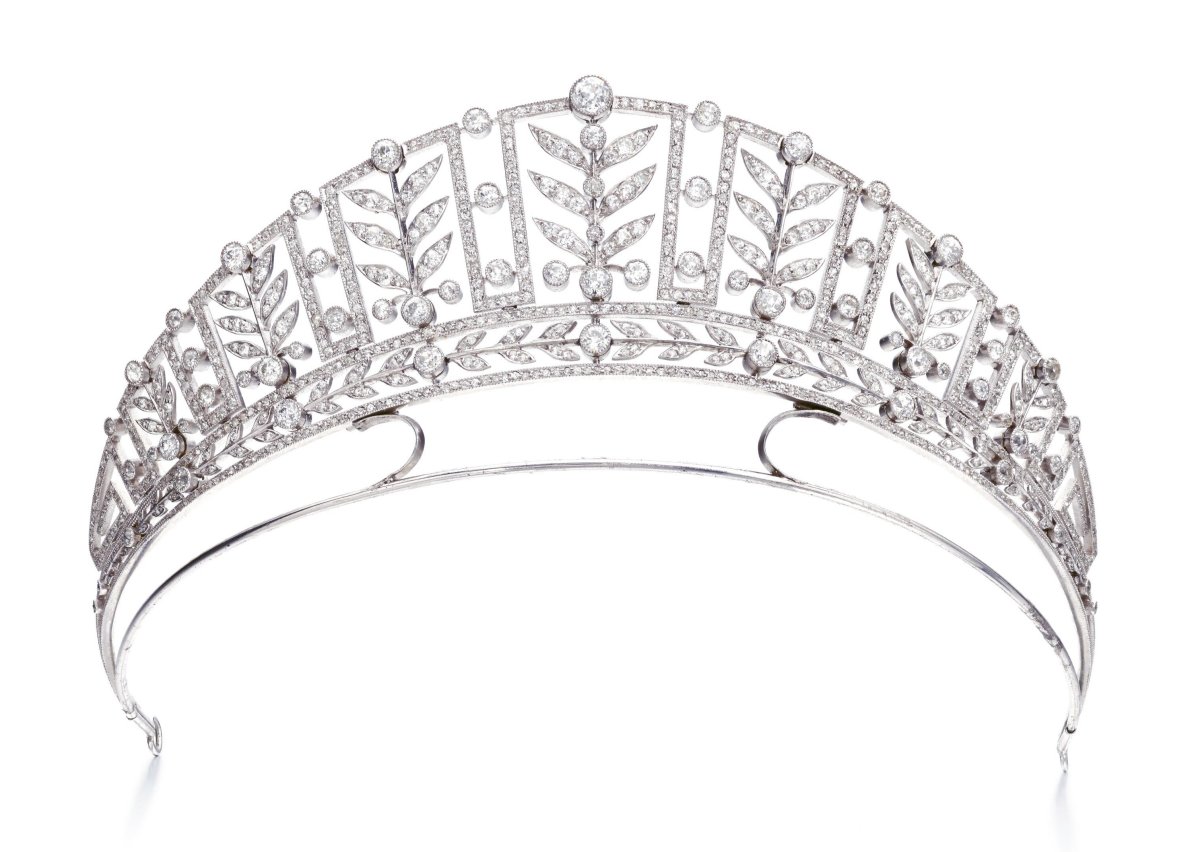
And finally, we’ve got a lovely tiara from one of my favorite historical jewelry firms. An unnamed “member of the European high nobility” is offering this incredible diamond kokoshnik in the upcoming sale. The tiara is described in the lot notes as an “openwork kokoshnik-style tiara of neoclassical design featuring a meander motif and laurel leaves, millegrain-set throughout with circular- and single-cut diamonds.” It is said to have been made around 1910 by the German jewelry firm Koch.
Indeed, Koch was known at this point for the firm’s ability to render traditionally heavy, masculine design motifs in airy diamond tiaras. The catalogue compares this tiara to another Koch jewel from the same period: the Prussian Tiara, made for Princess Viktoria Luise of Prussia and now worn by her Spanish royal descendants. The tiara also shares visual similarities with another Koch masterpiece, the Prussian Diamond Kokoshnik, and a tiara that I’ve often guessed might be a Koch creation, the Swedish Aquamarine Kokoshnik. Incredibly–at least for those of us who are Koch fans–the auction estimate for this piece is also more modest, set at 8,500-13,000 Swiss francs, or about $9,700-$15,000 USD.
Leave a Reply
You must be logged in to post a comment.